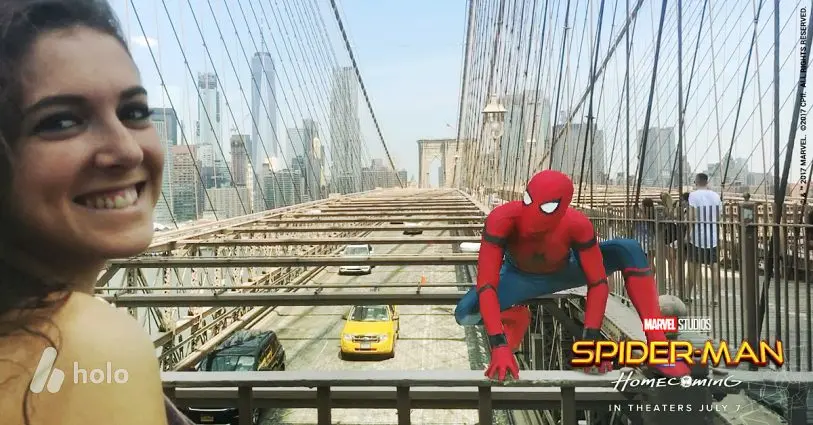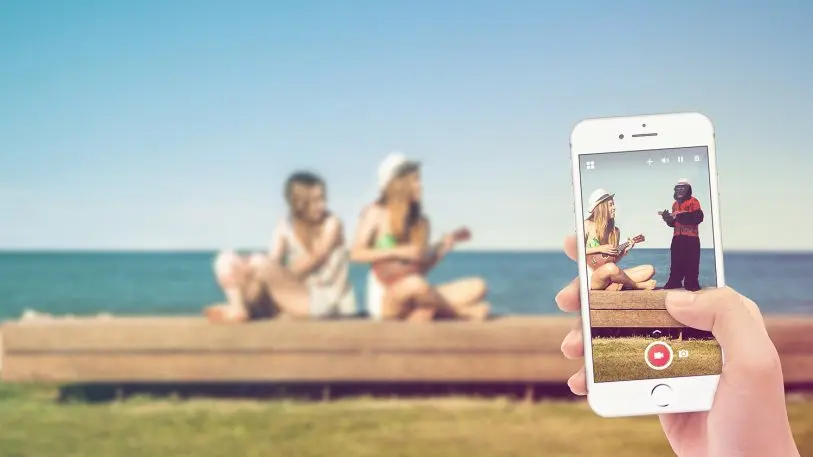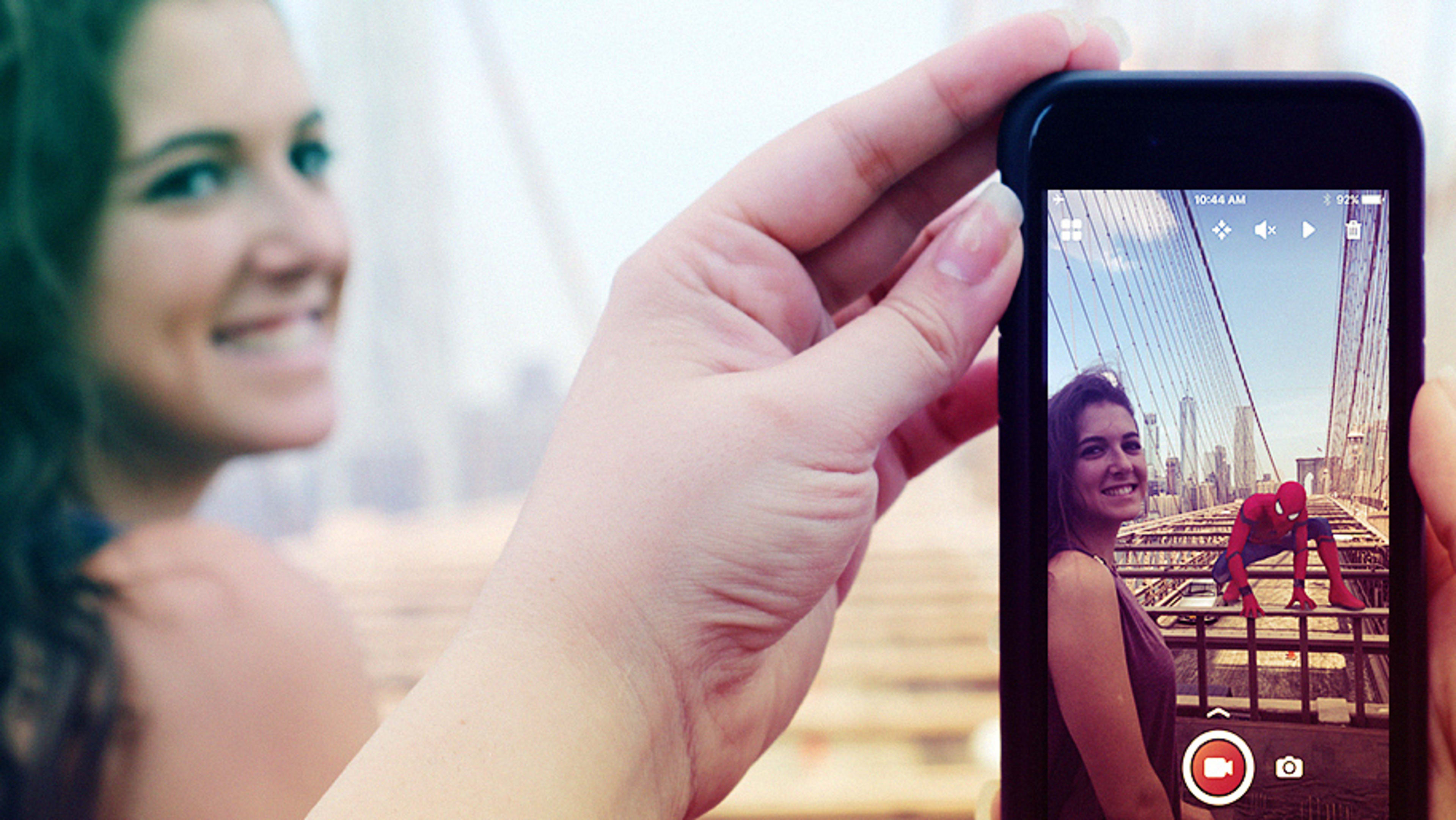Don’t be surprised if over the next few days you start seeing videos of your friends posing with a very realistic-looking Spider-Man in your social feeds.
That’s because today, 8i, a Los Angeles-based virtual and augmented reality technology company, launched Holo, a mobile app for iOS and Android that lets users insert 3D holograms into everyday scenes and then shoot video or photos of them that can be shared.
At launch, the app will feature hundreds of holograms from several 8i partners, including Sony Pictures, Cosmopolitan, and celebrities like actress Debby Ryan or YouTube star Matt Steffanina.
8i, a leader in volumetric capture, a technology that allows VR and AR content creators to integrate photo-realistic human avatars in their projects, first unveiled Holo at the Sundance Film Festival in January. There, attendees were able to interact with a hologram of actor Jon Hamm as a promotion for the film Marjorie Prime. Then, in March at SXSW, 8i rolled out a virtual reality experience featuring a holographic astronaut Buzz Aldrin on Mars.
With the broad rollout of Holo, though, the company is now putting holograms in everyone’s hands. It’s a continuation of 8i’s strategy of helping partners create high-quality, realistic VR and AR content featuring 3D human performance.
And the new app is the logical extension of the increasing comfort with which people are mixing the digital with their real worlds—as apps like Pokémon Go, Musical.ly, and Snapchat have demonstrated, said Steve Raymond, 8i’s CEO.

Here Comes Spider-Man
With Holo, users peruse collections of holograms, each of which includes dozens of poses of, say, Spider-Man—as a promotion for the new film, Spider-Man: Homecoming. These are not computer-generated images, however. They’re live-action, shot at 8i’s Culver City, California, studio, using the company’s volumetric capture tools.
The company sees three main types of content that Holo will include over time: Things like summer one-offs with branded content, pets, or other novelties; content from long-term partners; and content with new partners featuring regularly updated material.
The hope is that people who are already creating and sharing lots of content on their phones will take quickly to Holo, downloading holograms of their favorite characters and YouTube personalities, Raymond said, and then mixing those holograms into their lives and shooting—and sharing—funny videos.
Over time—though not at launch—Holo will feature video-cutting tools like those in Vine, making it possible for users to create stop-motion videos. Even without that tool being initially available, though, users can export the videos they shoot in Holo into other video-editing software in order to create Vine-like quick films.
As an example, Raymond said, a Holo beta user in Australia—an Instagram influencer—created multi-scene Vine-style videos starring himself and holographic zombies going out for coffee. The zombies, Raymond added, were like actors in the scenes.

Holo-Bombing
While some creators will take the time to create complex videos with the holographic content, 8i expects that most people will focus instead on quick hits—especially using a technique the company calls “holo-bombing,” where someone shoots a video in a public place with a holographic character blending into a scene without anyone knowing it’s happening. Picture Spider-Man dancing behind someone sitting and reading at a cafe table.
The release of Holo doesn’t impact 8i’s commitment to helping partners create VR experiences featuring volumetric characters. But Raymond said it does represent the next stage of the company’s strategy—being a major player in helping a wide variety of partners create augmented reality content across several industries, among them e-commerce, education, advertising, and so on.
“As a brand, I can give you Spider-Man,” Raymond said. “I can give you IP in the form of celebrities, YouTube stars, and say, ‘What can you come up with?’ Share it with a hashtag, and we’ll feature the best ones. We see 3D immersive content as being a really broad category that is going to have lots of use cases.”
In that sense, he added, Holo is “low-hanging fruit” since no one’s ever before built an app that makes it easy for millions of people to create custom videos featuring high-quality 3D representations of their favorite characters and personalities.
There’s a longer-term play here, as well, Raymond said. He expects the proliferation of AR glasses from multiple sources over the next few years, all of which should be capable of incorporating the kinds of holographic content featured in Holo. With glasses like that, he said, wearers could walk around, see something they want to make a video of with holograms, and easily shoot and stream it.
“Everything we’ve created for phones will work on [AR glasses] from day one,” Raymond said. “It’s the same format. For us, that’s another selling point for advertisers and media companies—start building your content libraries now, because the use cases are just going to grow.”
Recognize your brand’s excellence by applying to this year’s Brands That Matter Awards before the early-rate deadline, May 3.
